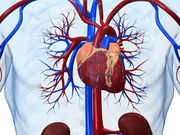Cardiovascular disease risk higher when low HDL-C accompanied by high triglycerides, LDL-C
TUESDAY, May 17, 2016 (HealthDay News) — The impact of high-density lipoprotein cholesterol (HDL-C) on cardiovascular disease (CVD) risk is modulated by triglycerides (TG) and low-density lipoprotein cholesterol (LDL-C), according to a study published online May 10 in Circulation: Cardiovascular Quality and Outcomes.
Jacquelaine Bartlett, from the Geisel School of Medicine in Hanover, N.H., and colleagues followed 3,590 men and women from the Framingham Heart Study offspring cohort without known CVD between 1987 and 2011. If TG and LDL-C were both low (<100 mg/dL), low HDL-C was defined as isolated.
The researchers found that after adjustment for covariates, CVD risks were higher when low HDL-C was accompanied by LDL-C ≥100 mg/dL and TG <100 mg/dL (odds ratio, 1.3), TG ≥100 mg/dL and LDL-C <100 mg/dL (odds ratio, 1.3), or TG and LDL-C ≥100 mg/dL (odds ratio, 1.6), compared with isolated low HDL-C. Results were essentially the same when low HDL-C was analyzed with higher thresholds for TG and LDL-C. High HDL-C was associated with 20 to 40 percent lower CVD risk compared with isolated low HDL-C, except when TG and LDL-C were elevated.
“CVD risk as a function of HDL-C phenotypes is modulated by other components of the lipid panel,” the authors write.
Copyright © 2016 HealthDay. All rights reserved.








